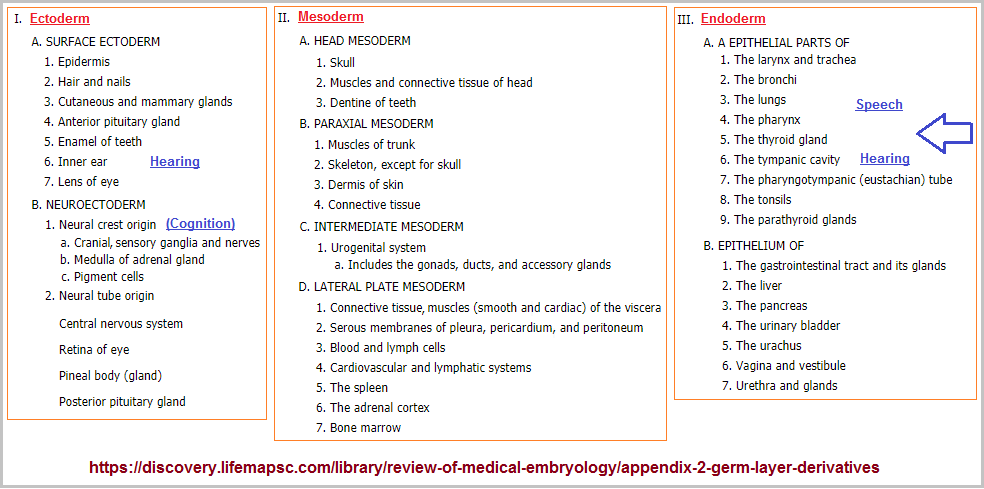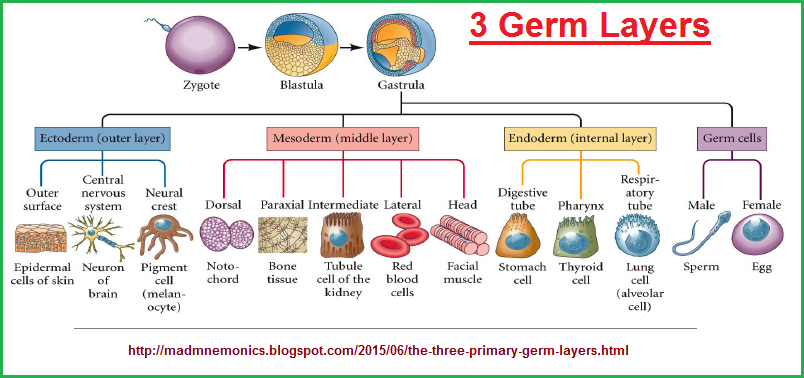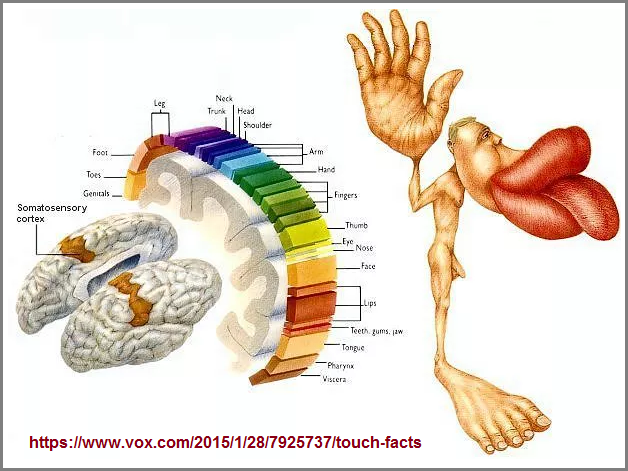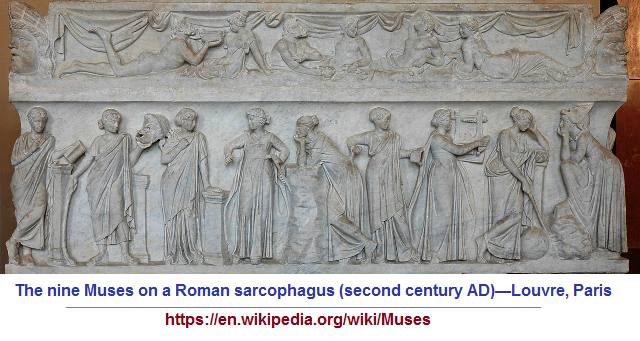Page 2
~ The Study of Threes ~
http://threesology.org
| pg 1 | pg 2 | pg 3 | pg 4 | pg 5 |
Taking responsibility for your vocal health starts with understanding how the system works. To do that, you must appreciate the three production steps: respiration, phonation and articulation:
- Respiration: air fuels the system: Respiration is the body's cyclic intake and exhalation of air. When you prepare to breathe, the diaphragm (the large, flat muscle located below the lungs) drops. This causes the volume within the lungs to expand, and air swoops in the nose or mouth, down through the larynx, and into the trachea, bronchi and, finally, lungs.
- Phonation: larynx sound makers: Most of the time, air swishes by the vocal folds, which remain open (abducted, or apart). To make voice, however, the vocal folds are brought together. When we do speak, it is always on the exhalation of air. As air whooshes by them, vocal folds ripple, snap and hum, not unlike flags blowing in the wind. The faster your vocal folds vibrate, the higher the pitch of your voice. That is not due to the speed of the respiration, but rather to the voluntary shaping of your vocal folds.
- Articulation: we have speech! In all, 19 points between the vocal folds and the lips allow us to produce speech. Some are: the lips, teeth, palates, tongue, vocal folds, nasal cavity, uvula and jaw. Each part plays a special part in creating specific sounds.
The three parts of speech
Though at present researchers prefer to think in terms of deterioration in biological processes as the culprit causing changes to occur, the directions to which they are focused in their deteriorations can be individually described from person to person, unless crude generalities are preferred by those not interested in calculating degrees of change. Language, hearing and cognition can take what appear to be individualized paths... like someone in pain trying to regress to a more secure moment in their development... noted sometimes as a person retreating to infantilism or the womb in their behavior. Individual mechanisms of biological activity working in concert such as hearing, language and cognition may have their own separate forms of retreat, if we take a look at how their physical manifestations (ear structure, larynx-etc., brain) are developed in the origination of the Three Germ layers, which appears to have originated along a one-two-three developmental path itself, correlated with (earth worm to human) animals having three germ layers, or two germ layers (such as the Cnidaria.) and the proposed idea of one germ layer being exhibited by the animal known as sponges.


Since the origination of the mouth and anus is a primary structure in developing organisms, it is the Endoderm which might be placed first in the line-up followed by the Ectoderm, since the Mesoderm came third in development as part of the structural development of the inter-mingling of the Ectoderm and Endoderm, thus giving us a Endoderm- Ectoderm- Mesoderm line-up sequence, where the 3rd positioned is actually 1st, the 1st is actually second, and the 2nd is actually 3rd.
It is of interest to note that the apparatus of hearing occurs in both the ectoderm and endoderm, which thus reflects a type of dichotomy, just like the Endoderm because of it occasion to house the mouth/anus orientations is also a dichotomy, and the skull portion of the brain developed by way of the Mesoderm, while the brain's basic functionalities form in the Ectoderm. Hearing may thus retreat or even pass through a behavior of dichotomization (like the hearing of "voices"... or a voice thought not to be one's own), and the voice can develop through stages of expression such as the small voice of a child to the larger voice of an adult, not to mention the three recognized singing voice types of both men and women. The brain itself, appears to have but one place to retreat to, aside from the skull that is.
Yet, again, this may at some point in such a consideration bring to mind the idea that such entities were once separate and free living independent creatures before finding themselves in a physical being, though it must be noted, as an aside comment, that non-animate objects have s "voice" so-to-speak in whatever sound they make. They can also "hear" in the sense they are responsive to sound waves (or other types of reverberation, frequency and modulation)... even if we humans have difficulty or no interest in identifying the range of hearing that, for example, a given rock may exhibit. But, do rocks think? Or has this short sojourn ventured too far into the realm of anthropomorphism? Any way, enough of this type of digression has been said at this point.
But let us not be too quick in underestimating the facility of touch as part of the Hearing- Language- Cognition ensemble, thereby bringing to the fore the question also about sight, leaving us with a 3/2 ratio or a 3/3 ratio if we include smell. If we take a look at a commonly used image of cortical mapping of our senses, we have the following representation of what is sometimes referred to as the The homunculus or Homunculus Man, which had its origins back in 1937 (A little man of some importance):

When it is cited that The sense of touch is formed in the brain before birth, a discussion of hearing, language and cognition must be 'cognitively cognizant' of its role in the "whole" or holistic medical approach to a person. I mention this in passing so as not to interrupt other planned digressions. But let me provide a short list of touch references to give some "disproportionate" role the sense of touch plays in the overall sensory area: (9 surprising facts about the sense of touch by Joseph Stromberg, Jan 28, 2015, 9:10am EST)
- Your brain pays wildly disproportionate attention to touch on different parts of your body.
- Your sense of touch gets worse as you age.
- People can be "touch-blind". (H.O.B: or touch-speechless, or touch deaf, or touch unthinking?)
- You have a special system for feeling emotional, social touch.
- You also have a special system that makes pain hurt.
- Touch is mysteriously crucial for a baby's development.
- Touch shapes first impressions of people in weird ways.
- We still don't really understand how sexual touch works.
- Your emotions can warp how you experience pleasure and pain.
Several people have commented that vision is our dominant sense, suggested as being a shift away from auditory processing when writing and reading came to be the main means of transferring and recording sounds of speech. ( Ordering of the senses). Another says: "There is an extremely high incidence (greater than 50 percent) of visual and visual-cognitive disorders in neurologically impaired patients, such as those with traumatic brain injury." (Vision Is Our Dominant Sense by Thomas Politzer, O.D. Former NORA President, Neuro-Optometric Rehabilitation Association). Another says:
When people converse in their day-to-day lives, they often speak about what they hear, smell, taste or feel. First and foremost, however, they talk about their visual perceptions. This is the conclusion of a team of scientists headed by Lila San Roque, Kobin H. Kendrick, Elisabeth Norcliffe and Asifa Majid at the Max Planck Institute for Psycholinguistics in Nijmegen in the Netherlands, who conducted a study of 13 languages from around the world. However, they found no evidence of a fixed hierarchy of the other senses in the speakers’ linguistic usage. They therefore conclude the hierarchy of the senses is shaped by both biological predispositions and cultural influences.
The result of the study in Nijmegen confirmed one hypothesis proposed by the linguist Åke Viberg. In the early 1980s he had concluded from a large-scale study of more than 50 different languages that vision was the most important sense across languages. According to Viberg, vision ranks first and hearing ranks in second place, followed by the subordinate senses of touch, taste and smell.
Although their findings support the hypothesis of visual dominance as a universal characteristic of all languages, they found no evidence of a fixed hierarchy of the other four senses, in contrast to the previous claims.
Hearing ranked second in most of the languages studied, but there were exceptions to this rule. In Semai, for example, which belongs to the Aslian language family and is spoken by some people on the Malay Peninsula, verbal references to olfactory impressions occur more frequently than allusions to hearing. "These results are consistent with previous studies reporting the key role of smell in some societies," says Majid. Olfactory perceptions also figure more prominently in Jahai and Maniq, languages related to Semai, than in most other languages. The Jahai and Maniq, hunter-gatherer groups in southern Thailand and Malaysia, have around a dozen different abstract terms to describe odors, as Majid and colleagues have reported previously.
San Roque and her colleagues were also unable to observe a fixed hierarchy of the other senses. For example, verbs referring to tactile sensations rank in third place in languages such as Whitesands, Avatime and Mandarin. In Cha’palaa and Duna, by contrast, smell ranks third, while in Italian and Spanish third place is occupied by taste.
For the Nijmegen-based researchers, these results are an indication that human language usage is both a product of biological inheritance and a product of a specific culture.
Look First
It is rather astonishing to me how many linguists and those working in speech therapy or those having some alternative interest in language as well as human cognition, are rather deficient in their correlative knowledge of different subjects, much less grasp an understanding of how the presence of a recurring pattern-of-three exists in language, hearing and cognition (thinking). While there are non three-patterned arrangements in the human ear as well, it stands to reason that an alternation in the numerical assignment of these structures would have an effect on hearing, and thus speech as well as thinking, by related degrees of structural importance. In other words, if instead of multiple patterns-of-three we had multiple patterns of 4, 5, 6, 7, 8 etc., in the structure of the ear, surely it is not too much of a stretch of the imagination to consider the possibility that language and thinking would be attentively altered.
Yet, in discussing the usage of numbers for highlighting patterns, it is not about a given number that a threesological approach is focused on. The "three" is not viewed as a type of all-important Trinity as if it were a sacred entity to be worshipped.
The "three" is as much a tool as other numbers and symbols used by language, hearing and thinking. Even philosophers are particularly remiss about delving into the analysis of hearing as a topic, though when a view is encountered such as this one: Auditory Perception, there is a surprising lack of information referencing anatomical and developmental structure, and instead represents an amalgamation of porch-swing-philosopher superficialities so very typical of one philosophical paper after another.
While we can find a discussion of the parts and mechanics of the ear in a Handbook of Natural philosophy, it too reveals how well the system of public academia is in creating tunnel vision like horses with blinders on, because there is no correlations to speech patterns, writing patterns and thinking patterns, such as a threesological approach is manifesting.
And while there may be hundreds of philosophical papers that are more comprehensive in their analysis, the internet does not readily supply a means to find them, or access to them are behind what are referred to as "pay walls", where a person has to pay for a given research paper, despite the claims by multiple scientists and others that knowledge should be freely distributed so as to enhance overall human understanding. Independent researchers very often have limited budgets to work from and thus are not able to get at information with which to develop deeper insights due to a sharing of information with others who have a like-minded interest in a given topic, though those behind pay walls are not restricted from reading ideas such as are posted at the Threesology Research Journal sight. Yet, I am not immune to the practicalities of day to day living. Because people need money to live and that most research, particularly independent research is not funded, researchers are forced to find a means to supplement what are typically meager incomes— which force them to live sometimes under harsh conditions, though creativity and originality of thought is often generated by a person who is uncomfortable. Creative people are generally faced with being uncomfortable, and that discomfort is not necessarily due to external causes such as a lack of food, shelter, clothing or even money, but is generated from some internal source which makes many a poet, artist and others wake in the middle of the night and pursue that which originates from their own type of muse... be it the familiar kind or the episodic "presence" or "spectre" identified by vague intimations of their presence.
Whereas the word "creativity" is not generally used to explicate any definitive excursion into the inter-connective analysis of language, hearing and thinking; a short excursion into this realm via a short appraisal of the word "muse" is a moment's sideline entertainment (or 'diversion' if you wish), that creates a stage for the reader to think in broader terms of inclusiveness since the word "muse" has been applied to different subject areas, though its origin was a bit more selfishly applied:
In Greco-Roman religion and mythology, (the "muses" referred to) any of a group of sister goddesses of obscure but ancient origin, the chief centre of whose cult was Mount Helicon in Boeotia, Greece. They were born in Pieria, at the foot of Mount Olympus. Very little is known of their cult, but they had a festival every four years at Thespiae, near Helicon, and a contest (Museia), presumably—or at least at first—in singing and playing. They probably were originally the patron goddesses of poets (who in early times were also musicians, providing their own accompaniments), although later their range was extended to include all liberal arts and sciences—hence, their connection with such institutions as the Museum (Mouseion, seat of the Muses) at Alexandria, Egypt. There were nine Muses as early as Homer's Odyssey, and Homer invokes either a Muse or the Muses collectively from time to time. Probably, to begin with, the Muses were one of those vague collections of deities, undifferentiated within the group, which are characteristic of certain, probably early, strata of Greek religion.

Differentiation is a matter rather of mythological systematization than of cult and began with the 8th-century-BCE poet Hesiod, who mentioned the names of Clio, Euterpe, Thalia, Melpomene, Terpsichore, Erato, Polymnia (Polyhymnia), Urania, and Calliope, who was their chief. Their father was Zeus, and their mother was Mnemosyne ("Memory"). Although Hesiod's list became canonical in later times, it was not the only one; at both Delphi and Sicyon there were but three Muses, one of whom in the latter place bore the fanciful name Polymatheia ("Much Learning"). All the Hesiodic names are significant:
- Thus Clio is approximately the "Proclaimer"
- Euterpe the "Well Pleasing"
- Thalia the "Blooming," or "Luxuriant”
- Melpomene the "Songstress"
- Erato the "Lovely"
- Polymnia "She of the Many Hymns"
- Urania the "Heavenly"
- and Calliope "She of the Beautiful Voice"
- Because dancing was a regular accompaniment of song, it is not remarkable that Hesiod called one of his nine "Delighting in the Dance," Terpsichore.
- The Muses are often spoken of as unmarried, but they are repeatedly referred to as the mothers of famous sons, such as Orpheus, Rhesus, Eumolpus, and others connected somehow either with poetry and song or with Thrace and its neighborhood, or both. In other words, all their myths are secondary, attached for one reason or another to the original vague and nameless group. Hence there is no consistency in these minor tales— Terpsichore, for example, is named as the mother of several different men by various authors and Orpheus generally is called the son of Calliope but occasionally of Polymnia.
Statues of the Muses were a popular decoration in long galleries and similar places; naturally, sculptors did not make them all alike but gave each a different attribute, such as a lyre or scroll. This may have contributed to the fanciful distribution of individual Muses among the different arts and sciences, especially in Roman times. The lists that have come down are all late and disagree with one another. A common but by no means definitive list is the following:
- Calliope: Muse of heroic or epic poetry (often holding a writing tablet).
- Clio: Muse of history (often holding a scroll).
- Erato: Muse of lyric and love poetry (often playing a lyre).
- Euterpe: Muse of music or flutes (often playing flutes).
- Melpomene: Muse of tragedy (often holding a tragic mask).
- Polymnia: Muse of sacred poetry or of the mimic art (often shown with a pensive look).
- Terpsichore: Muse of dancing and choral song (often shown dancing and holding a lyre).
- Thalia: Muse of comedy (often holding a comic mask).
- Urania: Muse of astronomy (often holding a globe).
Source: "Muse." Encyclopædia Britannica Ultimate Reference Suite, 2013
The following example related to the above an describes an instance where someone(s) wanted to argue against what may be interpreted to be the presence of the idea concerning nine muses overall (and perhaps the idea of three muses or the value "three" which may have been associated thereto but history does not adequately provide us with an accurate portrait of the socially used context where multiple "threes" may have been used and mostly overlooked as they are today except by a few cultural anthropologists). I got the image from the same Encyclopedia source as above:
In a sense, we could say that the muses (of later ages) represent Language, Hearing and Cognition, though I suspect some readers may want to challenge this as did the comments in the above image refer to an argument about 10 muses and emphasized a "four" presence, perhaps as a means to solidify the cultural presence of a "three" that historians nor historical Sociologists have not yet turned their attention towards describing this facet of human thematics as a relevant consideration in their analysis and comparison. Indeed, if we look up the usage of given number themes which reoccur as if they are some sort of disease,war, natural disaster or species of hominid, more attention might be paid to such an area of cognition.
Not only should a consideration as to the number of the muses should be given, but also to the stark fact that they were women, and that this representation is sometimes used to suggest to some women of a largely unrecognized importance that the female psyche has to offer humanity and that humanity is not taking advantage of the wisdom, intelligence, insight and other unrecognized spiritual and intellectual attributes, though the female physicality has and remains taken advantage of in various forms of exploitation that even some women indulge in by taking advantage of the vulnerabilities of women during impressionable moments whereby they are transformed into an instrument for another's neurotic preoccupations and self-indulgences.
If women in the past were viewed as being so important, than why aren't they more represented as leaders in today's social order (one might want to ask), unless they are representative metaphors for behaviors not typically seen or expressed by most men (in an ancient age... particularly in a Spartan society where young boys were isolated with other boys for combative training and thus restricted from embracing maternalisms); and thus "explained" as a female attribute or effeminate characteristic as opposed to a typical male (of that ancient age) who was more coarse and vulgar, though nonetheless viewed as being normal and typical for that ancient time. Instead of describing an intellectual interest or other-than-male activity as that being influenced by a god, the idea of a female influence was pronounced as an acceptable alternative and "of course" they had some association with a god, so as to provided for some socially acceptable deference to someone who exhibited such a characteristic. Let us also note there appears to be an inclination towards a development of role assignment towards the adoption of those characteristics which display an orientation towards language, hearing and cognition, which might have become the greater ideal if the "muse" idea was kept as a central way of thinking as society developed over the centuries, but eventually lost its flavor and thus is kept alive mostly as a curio.
Let us into the next page to take a look at one version of interpretation as to the quantity of muses, noting that in the instance where there are three, the association with language, hearing and cognition can be seen, as opposed to an association with any other sense of perception. However, a reader may not be inclined to consider the actions of dance and music as expressions of intellectual activity, though such efforts in time and place long ago were extended efforts of concentration in their performances, as one might differentiate from the presumed scatter-brained actions of impulsiveness which might well have existed amongst a largely uneducated populace whose education was a mixture of superstition, multiple gods, and a myriad of mythological considerations fostered and supported by poor nutrition, poor hygiene, and overall poor healthcare as well as a largely unsupervised social organization whose idea of a civil law enforcement might well have been akin to those cited today as good Samaritans, neighborhood gang protection, or cops who might be on-the-take.
Origination date: Monday, December 25th, 2019... 5:47 AM
Initial Posting: Thursday, December 26th, 2019... 9:51 AM
Updated Posting: Tuesday, February 7th, 2023... 10:42 AM
Herb O. Buckland
herbobuckland@hotmail.com